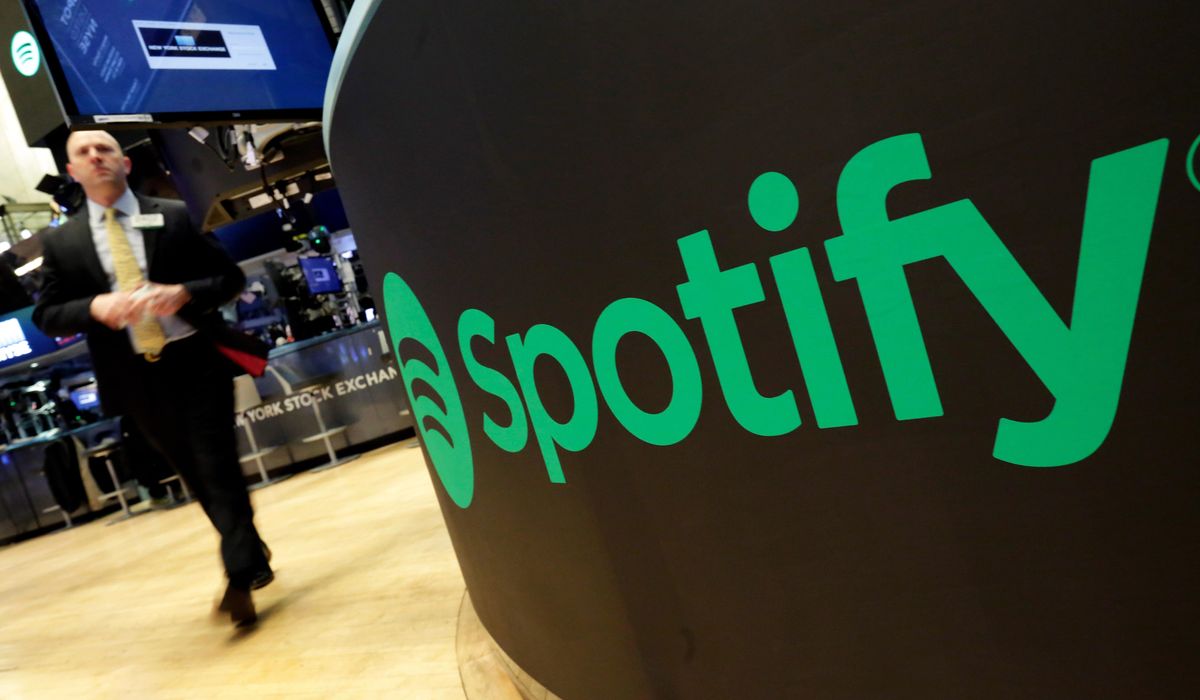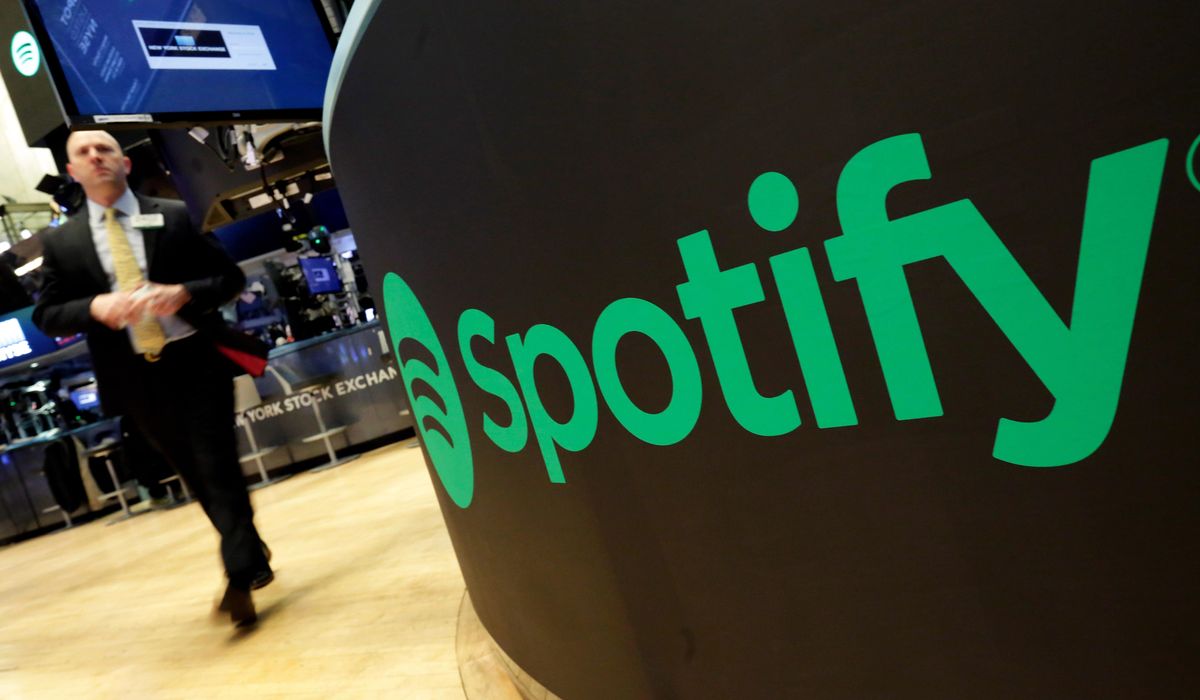
Americans increasingly are closing their eyes and opening their ears for their entertainment, says a study of pandemic-fueled trends.
Half of consumers feel burned out by screens and now listen to digital audio podcasts in their free time, according to the National Research Group, a global strategy firm focusing on entertainment and technology.
The research firm’s Aug. 12-18 internet survey of 1,569 entertainment consumers ages 18 to 54 found that 1 out of 2 Americans said they were suffering from screen fatigue and using podcasts “to travel to new places and hear new perspectives.”
Jon Penn, the firm’s CEO, compared options for video and audio entertainment to choices for dining out.
“Video streaming is like going to a food hall: Video consumers use a variety of services to meet their diverse viewing needs,” Mr. Penn told The Washington Times. “The report shows the audio wars are more of a buffet: Audio consumers plan to turn to a single app to satisfy all their listening needs in one place.
“The winners in the audio wars will uniquely deliver a one-stop slate that meets rising demand for social, global and creator-driven content,” he said.
Listeners can choose from more than 2 million podcasts, with more than 48 million episodes, according to PodcastInsights.com.
Spotify, the world’s largest music streaming provider, has reported significant third-quarter revenue growth in its podcasting properties.
“Excitement from advertisers for the podcast industry has increased substantially over the last year and we are ahead of our plans for podcast monetization. Audio ads on the internet are now becoming a bigger part of advertisers media mix overall,” Spotify founder Daniel Ek said in an Oct. 27 shareholder letter.
Spotify’s total monthly active users grew by 19% over the third quarter last year to a total of 381 million consumers across 86 global markets, the shareholder letter said. A 75% jump in ad-supported revenue and a 27% rise in overall revenue accompanied the podcast-driven spike.
Buzzsprout, the world’s second-largest podcast host, “nearly tripled” its business in 2020 “just from people deciding to start podcasts,” Alban Brooke, the platform’s head of marketing, told The Times.
“We saw an incredible amount of growth as soon as lockdowns came from COVID,” Mr. Brooke said.
Dustee Jenkins, Spotify’s global head of communications, told The Times that the National Research Group study confirms a “strong performance in podcasting and ad revenue” that propelled the Swedish-based provider to the top spot for U.S. earnings over the past year.
The study notes a particularly dramatic rise in digital podcast consumption among Generation Z and millennials over the past year and a half as social media options such as the Clubhouse App and Twitter Spaces have exploded in popularity.
After spending long hours in front of a screen at school or work, young people seek out podcasts as a diversion while doing yard work and other household chores — settings where video platforms fall short, the study found.
One-third of Gen Z respondents said audio is indispensable as an entertainment medium. Half of millennials said they plan to use more audio in the future, and 3 in 5 millennials said they turn to audio to learn something new.
The study said Gen Zers and millennials are migrating to audio podcasts at higher rates than other generations, providing their largest and most loyal audience demographic.
Justin Jackson, a co-founder of podcast platform Transistor.fm, took issue with the study. “I don’t believe reports like this should lump stats for music streaming and podcasting together like this,” he said.
Only 28% of Americans older than 11 listen to podcasts on a weekly basis, said Mr. Jackson, citing recent media data from Edison Research.
“Podcasting has been growing ‘slow & steady’ for a decade; it hasn’t had the meteoric growth rates that streaming music has,” he said in an email.
Mr. Jackson also disagreed with the study’s finding that listeners tend to use only one app to meet their needs. He pointed to Edison Research data showing that “24% of weekly podcast consumers use Spotify and 21% use Apple Podcasts.”
“Our own internal research showed that only 50% of Gen Z respondents (who were also podcast listeners) used Spotify to listen to podcasts,” he wrote.
‘Read a book, take a walk’
Concerns about too much time in front of screens extend beyond adults surveyed in the National Research Group study. Adolescents now spend nearly eight hours a day in front of a screen, doubling their estimated pre-pandemic screen time, according to a study of 5,412 adolescents published Monday in the medical journal JAMA Pediatrics.
Media psychologist Jerri Lynn Hogg, a senior research fellow at the Media Psychology Research Center, said turning to podcasts could help “reframe” Americans’ approach to “screen burnout and Zoom fatigue.”
“The bigger questions we should ask are why and how screens are being used. If the user is starting to feel drained, checked out or ignoring commitments, then it is a sign that it is a good time to take a break,” Ms. Hogg told The Times.
A past president of the American Psychological Association’s Society for Media Psychology and Technology, Ms. Hogg is launching a podcast titled “The Art of Digital Living” as a healthy alternative to video screens.
She suggests replacing the harmful blue light exposure of smart devices, computers and digital television screens “with activities that have a similar goal.”
“Make a call, read a book, take a walk or meet a friend in person,” Ms. Hogg said. “Audio tends to be more immersive since you can focus on the voice and activate your own imagery.”
Weiwei Chen, a health economics professor at Kennesaw State University, said she found in an assessment of children’s screen time that television viewing among low-income families dominates the habit.
Screen time doubled among children younger than 2 from 1997 to 2014, she reported in a co-authored research letter that JAMA Pediatrics published in February 2019.
Podcasts “could have a positive health impact on consumers compared to screen time” if people exercise or perform other “less sedentary” activities while listening, Ms. Chen told The Times.
They also could have mental health benefits in terms of “brain and physiological responses,” she said, adding that research shows “that listening to a story is more cognitively and emotionally engaging than watching a video.”
“People are bored of Zoom meetings all day. Podcasting is a good alternative to screen media and can be consumed much more flexibly,” Ms. Chen said. “Podcasts could reduce eye strain and fatigue since people do not need to stare at a screen when they are listening.”
She said the study’s focus on 18- to 54-year-olds means children and older adults may still prefer videos to podcasts.
Some governments and parents groups have long advocated for limiting children’s screen time. China recently tightened government restrictions that limit children to three hours of online gaming each week. The Associated Press reported Sept. 20 that Chinese children are now allowed to play online video games only between 8 p.m. and 9 p.m. on Friday, Saturday and Sunday during most weeks.
Actress Sam Sorbo, who hosts “The Sam Sorbo Show” podcast, said she applauds such limits.
“There’s something that’s terribly isolating for kids about sitting in front of a screen all day for school, then doing it again in their free time. They’re looking for intellectual stimulation, but they don’t need to be in front of a screen all the time,” said Mrs. Sorbo, a homeschooling advocate.
Kimberly Fletcher, the founder and president of Moms for America, said she encourages parents to take away their children’s phones at 8 p.m. so they don’t have blue light in their faces as they fall asleep.
“Put down the phone, pick up a book and read stories of America’s history,” Ms. Fletcher said. “The moms we hear from say the screen time constantly overstimulates kids with flashes of lights.”
She said some mothers have discovered a preference for podcasts over screens.
“So many moms want to listen to something while they’re doing dishes, on the treadmill or taking the kids somewhere in the car,” Ms. Fletcher said.
Despite the adage that “video killed radio,” the trend toward podcasting suggests that digital audio may well replace screens among some demographics.
The National Research Group study found that 77% of U.S. consumers, including 90% of social media users, believe “social audio experiences are here to stay and will continue to grow in the future.”








